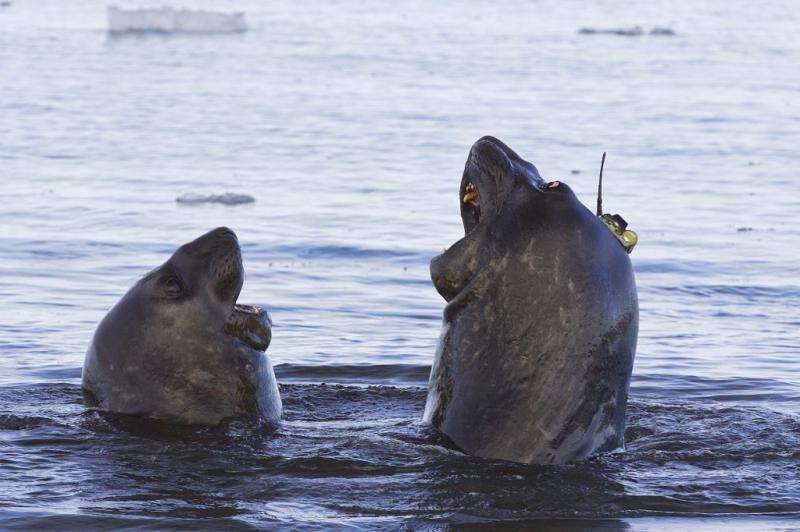Seals help plug Antarctic water mystery

Elephant seals have helped scientists to demonstrate that fresh water from Antarctic's melting ice shelves slows the processes responsible for the formation of deep-water ocean currents that regulate global temperatures.
The study, led by Dr Guy Williams from the Institute of Marine and Antarctic Studies and Antarctic Climate and Ecosystems CRC, is published today in Nature Communications.
Macquarie's Professor Rob Harcourt from the Department of Biological Sciences is the Facility Leader for the elephant seal IMOS Animal Tracking program through which the data is collected.
Dr Williams said the findings raised questions about potential future changes in global ocean circulation patterns.
"Antarctica and the Southern Ocean are like a beating heart, producing deep and powerful currents of cold water that drive global ocean mixing and regulate atmospheric temperatures," Dr Williams said.
"These currents begin with intense sea ice formation around the Antarctic continent in winter, which creates cold, salty and dense water that sinks and flows away from the continent in large volumes.
"If this production of Antarctic bottom water weakens, it leads to changes in global ocean circulation patterns that can, in turn, lead to changes in the global climate."
In 2011, the same team of researchers discovered a fourth source of Antarctic Bottom Water off Cape Darnley in East Antarctica.
The latest research published today, including an additional two years of data, shows that Prydz Bay makes an important secondary contribution to Cape Darnley Bottom Water.
"However we found that the contribution from Prydz Bay is less salty and dense due to the influence of nearby ice shelves," Dr Williams said.
"We can easily imagine that the production of these global ocean currents will slow as the rate of ice shelf melting all around Antarctica continues to increase."
Since 2011, elephant seals at Davis Station have been instrumented with oceanographic sensors as part of Australia's Integrated Marine Observing System (IMOS) , supported by Australian Government. The seal tagging component of IMOS is supported through logistical support and funding from the Australian Government's Australian Antarctic Program.
When the seals surface, their sensors relay information back to land via satellite, and the near real-time data is made available via the Global Telecommunication System of the World Meteorological Organization for immediate use. IMOS also makes the data available via their data portal. The oceanographic data collected by the seals is also used for ecological research into their behaviour and aids in conservation.
More information: G. D. Williams et al. The suppression of Antarctic bottom water formation by melting ice shelves in Prydz Bay, Nature Communications (2016). DOI: 10.1038/NCOMMS12577
Journal information: Nature Communications
Provided by Macquarie University


















